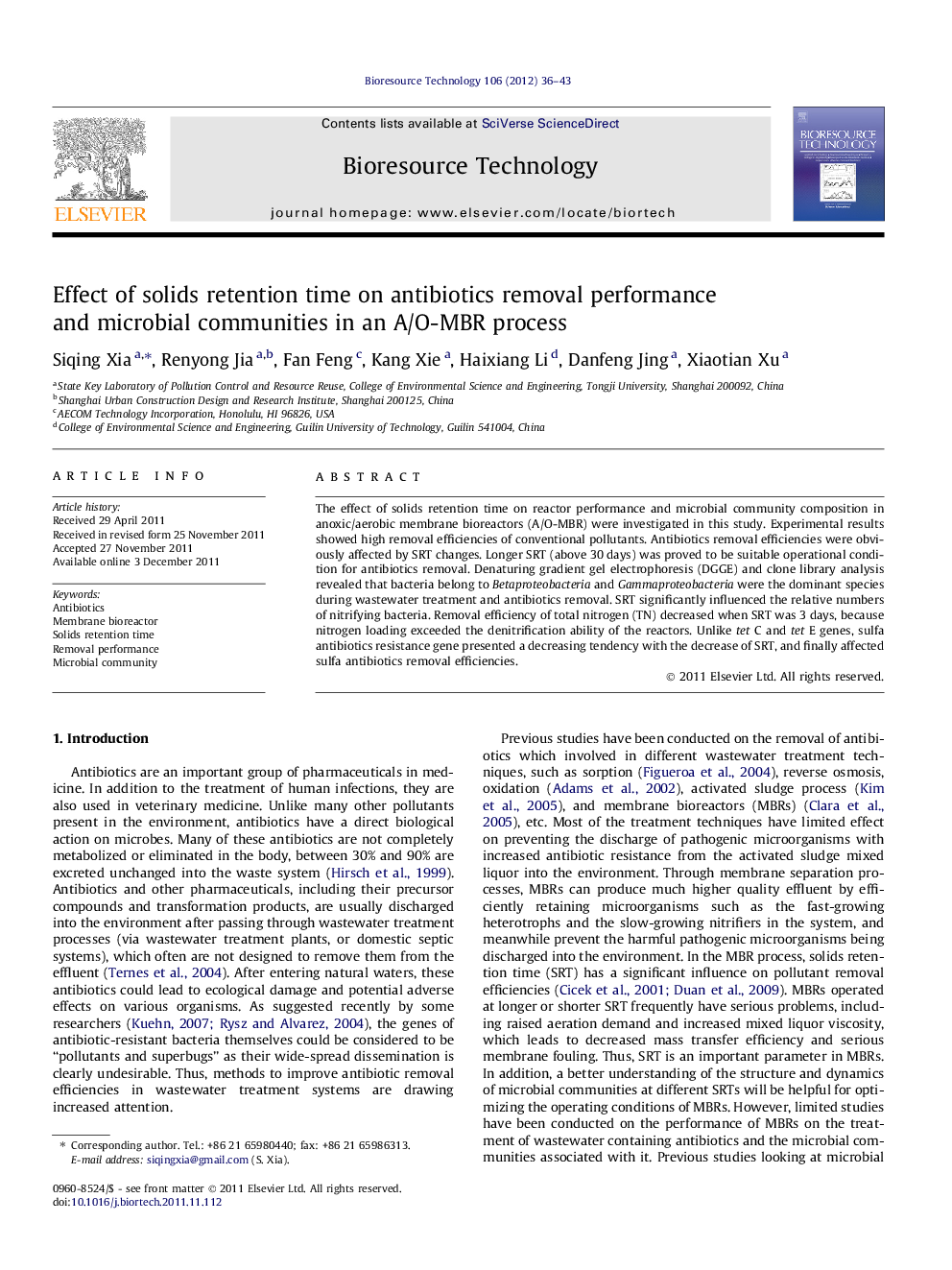| Article ID | Journal | Published Year | Pages | File Type |
|---|---|---|---|---|
| 681659 | Bioresource Technology | 2012 | 8 Pages |
The effect of solids retention time on reactor performance and microbial community composition in anoxic/aerobic membrane bioreactors (A/O-MBR) were investigated in this study. Experimental results showed high removal efficiencies of conventional pollutants. Antibiotics removal efficiencies were obviously affected by SRT changes. Longer SRT (above 30 days) was proved to be suitable operational condition for antibiotics removal. Denaturing gradient gel electrophoresis (DGGE) and clone library analysis revealed that bacteria belong to Betaproteobacteria and Gammaproteobacteria were the dominant species during wastewater treatment and antibiotics removal. SRT significantly influenced the relative numbers of nitrifying bacteria. Removal efficiency of total nitrogen (TN) decreased when SRT was 3 days, because nitrogen loading exceeded the denitrification ability of the reactors. Unlike tet C and tet E genes, sulfa antibiotics resistance gene presented a decreasing tendency with the decrease of SRT, and finally affected sulfa antibiotics removal efficiencies.
► We compared performance and microbial communities at different SRTs in the A/O-MBR. ► Betaproteobacteria and Gammaproteobacteria were the dominant species. ► SRT gave a significant influence on the nitrifying bacteria gene contents. ► Sulfa antibiotics resistance gene present a decreasing tendency with SRT decreasing. ► Longer SRT was the suitable operational condition for antibiotics removal.
